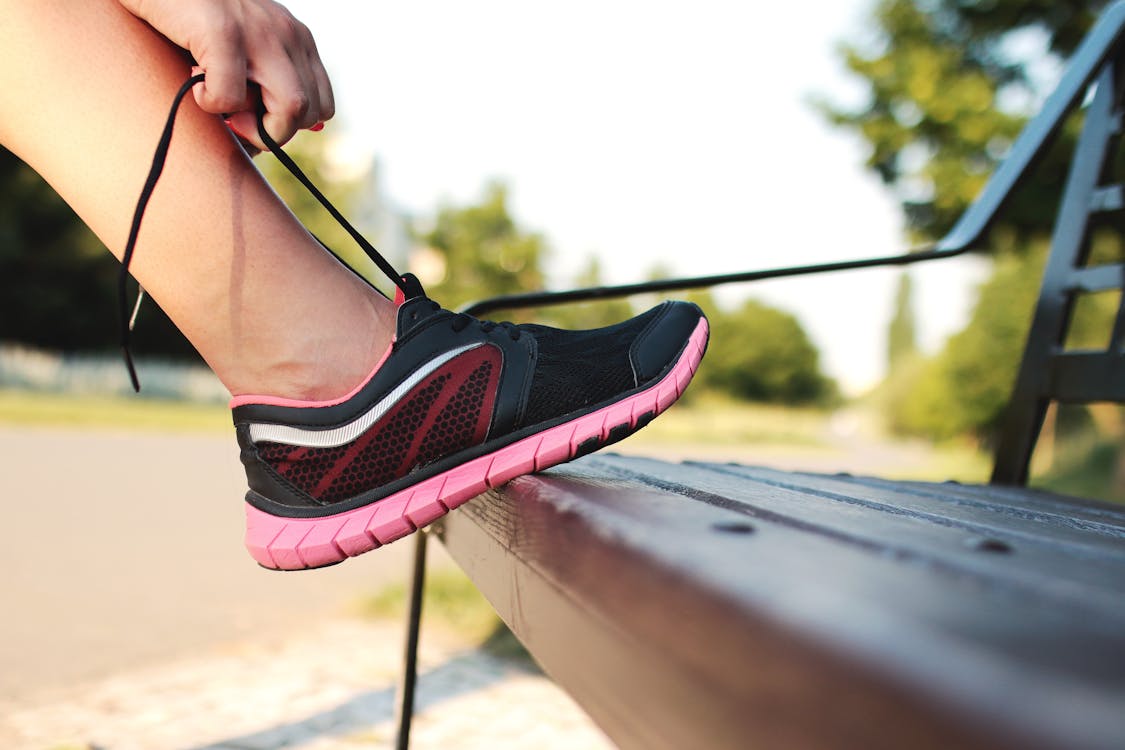5 Tips to Reduce Your Risk of Running Injuries
Consistent Training Leads to Skilled Running
Most athletes will attest that consistency is the most important aspect in progressing fitness and skill through training. This is why injuries set you back from reaching your full potential, or at least reaching goals in a timely fashion.

While running, there are many things we can do to prevent injuries and some of them require very little time to implement, although learning the most effective way to implement them is individualized and may take years to achieve personal efficiency. Indeed, running is a skill, and it takes a long time to learn how to use your body in the most effective way.
With a good training plan you will improve your efficiency, which will reduce physical and mental fatigue, reduce injury risk, and ultimately improve your performance! If you are new to running, or are simply wanting to improve, try these movement tweaks the next time you head out the door.
N.B . These tweaks are good guidelines, but if you have a preexisting dysfunction (remember a dysfunction may not present with pain or any other symptom), you may benefit from a personalized approach. If you fall into this group, book in for a running assessment or seek guidance from a running coach, or rehab professional with post-graduate training in running assessments.
It’s Much More Than One Foot in Front of The Other
1. Upright Posture
“Be tall!”
At the start of your run, and periodically during your run, remind yourself to be tall.
Think about elongating your entire spinal column; That is… if you had a string attached to the top of your head that connects down through the middle of your body, think about pulling that string up! You should not dramatically change your spinal curve with this, but you should feel that you are slightly taller.
Why? When done appropriately, this helps to engage your multifidus muscles (spinal stabilizers), and make you aware of your core.
This will help prevent energy loss due to poor stability, and will better allow you to apply force through your hips – helping to propel you forwards. It also helps with diaphragmatic activation and reduces the amount of airway resistance during breathing.
PS – it might be a good idea to start thinking about upright posture during the rest of your day, as we spend thousands of hours hunched over at work and at home each year, and BELIEVE IT OR NOT!, this affects our athletic performance!
2. Forward lean from the feet / ankles
“Lean forward from the ankles!”

Image Source: Olympics.com
Running should be efficient.
Leaning forward from the ankles aids in this efficiency, because it moves your center of mass slightly forward, and allows you to fall into your next stride.
Don’t forget #1 – it is too easy to let your forward lean come from hinging at the hips – “Stay Tall”, and keep your head up, as you need to be looking forward!
3. Posterior-chain propulsion
“Push, don’t pull!”
If we lean forward from the ankles, we will fall forward and must flex our hip joint and extend our knee to “catch” us from falling on our face.
We can use this forward energy most effectively by pushing ourselves forward, as soon as our foot hits the ground. Try to see if you can feel yourself pushing forward using your glutes, hamstrings and calves.
4. Shortened stride and increased cadence
“Shorten your stride and increase your cadence!”
“Imagine that you are a ball, and as you are rolling over the ground, you are attempting to touch as many different places on the ground as possible”
Most research suggests that elite runners who stay injury-free run with a cadence between 160-190 BPM. In most runners this improves multiple metrics (decreased “breaking phase”, decreased vertical oscillation, decreased need for force absorption), and ultimately it decreases the amount of wear and tear / abuse placed on joints and muscles. In addition, it is said to improve efficiency in the long-term after the athlete adjusts to running in this way.
The best place for our foot to land is directly under our center of mass because it minimizes the “breaking phase”. The breaking phase is best described as wasted energy in the time between the foot striking the ground, and the push off phase when we propel ourself forwards. To ensure that we land with a vertical tibia (shin bone) – it is crucial to having a high cadence and a shortened stride.
5. Land with your foot under your center of mass
“Most often, you should land using a midfoot strike”
The jury is still out on what the best type of foot strike looks like in endurance athletes, but here is what we do know:
- A midfoot strike is mostly likely to place the foot under your center of mass while running on flat ground.
- Landing with a forefoot strike lends to a 2.6 times decrease in injury risk compared to rearfoot strikers.
- Landing on the forefoot or midfoot places more stress on the foot musculature and Achilles tendon. Landing on the rearfoot places more compressive loading forces at the tibiofemoral and patellofemoral joints of the knee.
- Rearfoot strikers tend to land with their foot in front of the body, which leads to have a longer stride and greater vertical loading (increased forces applied to the body).
- Wearing shoes with larger heels lends to heel striking, whereas taking shoes off leads to landing on the forefoot or midfoot, with the strike being closer to the body.

Image source: Saucony
As always, we are reminded that science has limitations and common sense prevails, therefore do what feels right… BUT my recommendation would be to run on variable terrain, AND:
- As you run uphill, strike with your forefoot or midfoot.
- As you run the flats, strike mostly with your midfoot.
- As you run downhill, midfoot or heel strike may be best.
These are but a few ways to immediately change your running form, in an effort to improve efficiency and promote injury-free training.
General recommendations are terrible because they assume that all people are alike, so make no mistake – it is probably best to have a running assessment done to determine whether you truly need to change your running form.
Nevertheless, exposing yourself to learn different styles of running will grow your running skill-sets and your body’s durability, ultimately making you a better athlete!
This content is based on a previously published article by Jacob Carter Physiotherapy.
Expert Contributor
JACOB CARTER, LEAD



